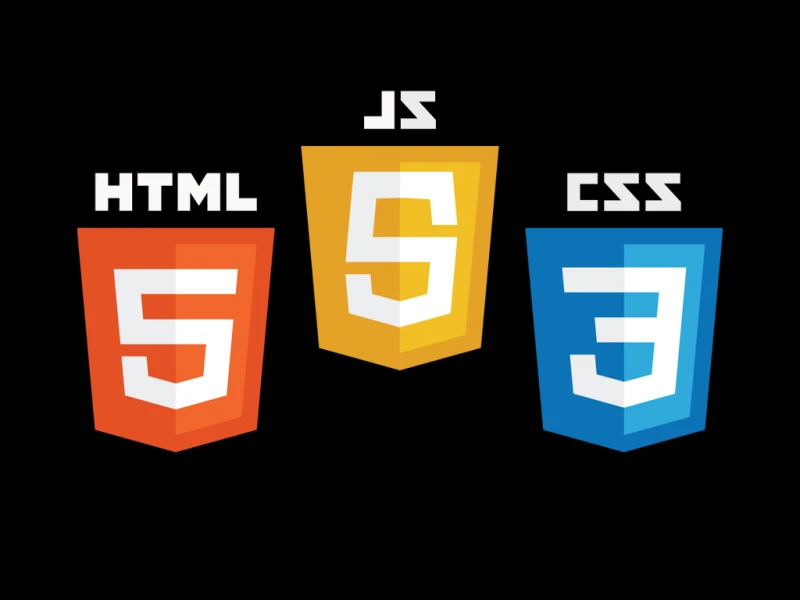
Laravel Scalable Apps: The Complete Guide
Building scalable Laravel applications is crucial for handling increasing user loads and ensuring your application remains performant and responsive. This tutorial will walk you through key strategies and best practices for achieving scalability in your Laravel projects.
Understanding Scalability
Scalability refers to the ability of a system to handle a growing amount of work or its potential to accommodate growth. In the context of web applications, this means ensuring your Laravel app can continue to perform well even as the number of users, requests, or data increases.
There are two main types of scaling:
-
Vertical Scaling (Scaling Up): Increasing the resources (CPU, RAM, disk space) of a single server. This is often simpler but has limitations.
-
Horizontal Scaling (Scaling Out): Adding more servers to distribute the load. This is generally more complex but offers greater flexibility and resilience.
Key Principles for Scalable Laravel Applications
Before diving into specific techniques, it's important to adopt a mindset that prioritizes performance and resource efficiency from the start.
-
Optimize Everything: From database queries to asset delivery, strive for efficiency.
-
Decouple Components: Break down your application into smaller, independent parts to allow for individual scaling.
-
Leverage Caching: Reduce redundant computations and database calls.
-
Handle Asynchronous Tasks: Offload long-running operations from the main request cycle.
-
Monitor and Analyze: Continuously track your application's performance to identify bottlenecks.
Step-by-Step Guide to Building Scalable Laravel Applications
1. Database Optimization
The database is often the first bottleneck in a growing application.
-
Indexing: Add indexes to frequently queried columns (e.g.,
PHPuser_id,email,created_at). This drastically speeds upSELECTqueries.// In a migration Schema::table('users', function (Blueprint $table) { $table->index('email'); }); -
Eager Loading (N+1 Problem): Prevent the "N+1 query problem" by using
PHPwith()when loading relationships.// Bad (N+1 problem): $users = User::all(); foreach ($users as $user) { echo $user->posts->count(); // Each user fetches their posts } // Good (Eager Loading): $users = User::with('posts')->get(); // Fetches users and their posts in two queries foreach ($users as $user) { echo $user->posts->count(); } -
Pagination: Always paginate large result sets for user-facing views to avoid loading excessive data into memory.
PHP$users = User::paginate(15); // 15 items per page -
Read/Write Splitting (Replicas): For high-traffic applications, consider separating read operations to read replicas and write operations to a primary database. Laravel can be configured to use different database connections for read and write.
PHP// In config/database.php 'mysql' => [ 'read' => [ 'host' => ['192.168.1.1'], ], 'write' => [ 'host' => ['192.168.1.2'], ], 'sticky' => true, 'driver' => 'mysql', // ... other configurations ], -
Monitor Slow Queries: Use tools like Laravel Telescope (in development/staging) or database-specific slow query logs to identify and optimize inefficient queries.
2. Caching Strategies
Caching is paramount for reducing database load and speeding up response times.
-
Configure a Robust Cache Driver: Avoid
Code snippetfileordatabasecache drivers in production for performance-critical applications. Use in-memory solutions like Redis or Memcached.CACHE_DRIVER=redis SESSION_DRIVER=redis # Also use Redis for sessions -
Route, View, and Config Caching:
Bashphp artisan route:cache # Caches route definitions php artisan config:cache # Caches configuration files php artisan view:cache # Precompiles Blade viewsRun these commands during your deployment process.
-
Application-Level Caching: Cache frequently accessed data that doesn't change often.
PHP// Cache query results $posts = Cache::remember('all_posts', 60 * 60, function () { return Post::all(); }); // Cache specific objects Cache::put('user_' . $user->id, $user, 60 * 5); -
Tagged Caching (with Redis/Memcached): For more granular control and invalidation of related cache items.
PHPCache::tags(['products', 'category:1'])->put('product_list_cat_1', $products, $minutes); // Later, to invalidate all products in category 1: Cache::tags('category:1')->flush(); -
HTTP Cache Headers: Utilize
Cache-Controlheaders for static assets and even dynamic content that can be cached by browsers or CDNs.
3. Queues and Workers
Offload time-consuming tasks to background processes using Laravel Queues. This keeps your web application responsive for users.
-
Choose a Queue Driver:
-
Redis: Highly recommended for production due to its speed and efficiency.
-
Amazon SQS: For AWS-heavy infrastructures.
-
Beanstalkd: Another lightweight option.
-
Database (not recommended for high scale): Useful for simple setups but introduces database overhead.
QUEUE_CONNECTION=redis -
-
Create Jobs:
Bashphp artisan make:job ProcessPodcastDefine the heavy logic in the
PHPhandle()method.// app/Jobs/ProcessPodcast.php class ProcessPodcast implements ShouldQueue { use Dispatchable, InteractsWithQueue, Queueable, SerializesModels; public function handle(): void { // Perform time-consuming tasks like audio processing, // sending emails, generating reports, etc. } } -
Dispatch Jobs:
PHPuse App\Jobs\ProcessPodcast; ProcessPodcast::dispatch($podcast); // or to a specific queue: ProcessPodcast::dispatch($podcast)->onQueue('audio_processing'); -
Run Queue Workers:
Bash# Basic worker php artisan queue:work # Daemon mode (more efficient, but requires restarts on code changes) php artisan queue:work --daemon # Specify queues to listen to php artisan queue:work --queue=high,default # Control attempts and timeout php artisan queue:work --tries=3 --timeout=60 -
Manage Workers with Supervisord: Use a process monitor like Supervisord to ensure your queue workers are always running and automatically restarted if they crash.
Ini, TOML; /etc/supervisor/conf.d/laravel-worker.conf [program:laravel-worker] process_name=%(program_name)s_%(process_num)02d command=php /var/www/html/artisan queue:work --sleep=3 --tries=3 --daemon autostart=true autorestart=true user=www-data numprocs=8 # Number of workers to run redirect_stderr=true stdout_logfile=/var/www/html/storage/logs/worker.log stopwaitsecs=30 -
Laravel Horizon: For Redis queues, Laravel Horizon provides a beautiful dashboard and code-driven configuration for monitoring and managing your queues.
Bashcomposer require laravel/horizon php artisan horizon:install php artisan horizon
4. Load Balancing and Horizontal Scaling
To truly handle high traffic, you'll need to distribute requests across multiple web servers.
-
Load Balancer: Use a load balancer (e.g., Nginx, HAProxy, AWS Elastic Load Balancer, Cloudflare) to distribute incoming requests evenly among your web servers.
-
Stateless Application: Your Laravel application instances should be stateless. This means:
-
No file-based sessions (use Redis/database sessions).
-
No local file storage for user uploads (use S3 or similar object storage).
-
No local caches (use a shared cache like Redis).
-
-
Multiple Web Servers: Deploy multiple instances of your Laravel application behind the load balancer.
-
Shared File System (Optional but useful for certain assets): For user-uploaded content or other shared files, consider using a network file system like NFS or cloud storage like Amazon S3, Google Cloud Storage, or DigitalOcean Spaces. Laravel's built-in
Storagefacade makes this easy.
5. Asset Optimization and CDN
-
Laravel Mix: Use Laravel Mix (or Vite) to compile, minify, and version your CSS and JavaScript assets. This reduces file sizes and helps with browser caching.
JavaScript// webpack.mix.js mix.js('resources/js/app.js', 'public/js') .postCss('resources/css/app.css', 'public/css', [ // ... ]); -
Content Delivery Network (CDN): Serve your static assets (images, CSS, JS) from a CDN (e.g., Cloudflare, AWS CloudFront). CDNs cache your assets closer to your users, reducing latency and offloading traffic from your web servers.
PHP// In config/app.php, set your CDN URL 'asset_url' => env('ASSET_URL', null),Then, in your
Code snippet.envfile:ASSET_URL=https://cdn.example.comLaravel's
asset()helper will then automatically use the CDN URL.
6. Code Architecture and Best Practices
-
Single Responsibility Principle (SRP): Keep controllers thin and delegate complex logic to dedicated service classes, actions, or repositories.
PHP// Bad controller public function store(Request $request) { // Lots of business logic here $user = User::create($request->validated()); // ... more logic return redirect()->back(); } // Good controller using a service use App\Services\UserService; public function store(Request $request, UserService $userService) { $user = $userService->createUserWithProfile($request->validated()); return redirect()->back()->with('success', 'User created!'); } -
Database Transactions: Use database transactions for operations that involve multiple database manipulations to ensure data consistency.
PHPDB::transaction(function () use ($request) { // Create user // Create profile // ... }); -
Laravel Octane: For extreme performance gains, consider Laravel Octane, which boots your application once and keeps it in memory, serving requests with Swoole or RoadRunner. This can lead to significant speed improvements.
Bashcomposer require laravel/octane php artisan octane:install -
Rate Limiting: Protect your API endpoints from abuse and brute-force attacks by implementing rate limiting.
PHP// In routes/api.php Route::middleware('throttle:60,1')->group(function () { Route::get('/user', function () { // ... }); }); -
Avoid Excessive Service Providers: Only load what's necessary.
-
Clean Code: Follow PSR standards, use meaningful variable names, and keep your code organized. While not directly performance-related, clean code is easier to maintain and optimize in the long run.
7. Monitoring and Alerting
You can't optimize what you don't measure.
-
Laravel Telescope (Dev/Staging): An excellent debugging and insight tool for your local and staging environments. Avoid running it in production under heavy load as it stores a lot of data.
-
Application Performance Monitoring (APM): Use tools like New Relic, Datadog, Blackfire, or Sentry to monitor your application's performance in real-time, identify slow queries, memory leaks, and other bottlenecks.
-
Server Monitoring: Monitor CPU usage, memory, disk I/O, and network traffic on your servers.
-
Log Management: Centralize your logs (e.g., using ELK stack, Logtail, Papertrail) to easily debug issues across multiple servers.
8. Deployment and Infrastructure
-
Managed Hosting: Consider managed Laravel hosting solutions like Laravel Forge, Laravel Vapor (serverless on AWS Lambda), or Cloudways, which automate many of the scaling and deployment complexities.
-
Cloud Providers: Leverage services from AWS, Google Cloud, or DigitalOcean that offer auto-scaling groups, managed databases (RDS, Cloud SQL), load balancers, and more.
-
CI/CD Pipelines: Implement Continuous Integration/Continuous Deployment (CI/CD) to automate testing and deployments, ensuring consistent and reliable updates to your scalable infrastructure.
Conclusion
Building a scalable Laravel application is an ongoing process that involves thoughtful architectural decisions, diligent optimization, and continuous monitoring. By implementing these strategies – from database and caching optimizations to leveraging queues, load balancers, and a robust deployment pipeline – you can ensure your Laravel application is well-equipped to handle high traffic and grow with your user base. Remember to always start with optimization in mind and iterate based on your application's specific needs and performance metrics.

